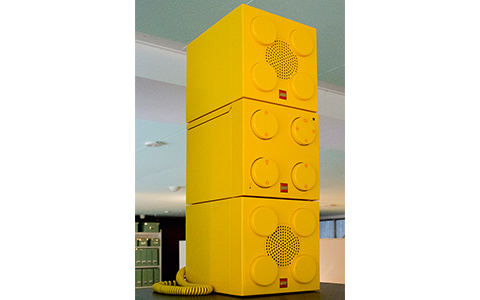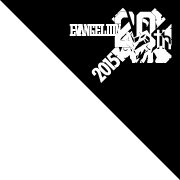Rise of a Young Design Group
The First Project Design
TGB’s activities began with prolonging “playing around.” Now it’s a funny story, but when they began they had no real design expertise.
“Before the 2000s there were lots of photos and positive films, and when creating printed works a certain amount of specialist knowledge was necessary. I was lucky because I knew an older guy from prep school who knew people in a design company. The company was called Mach 55, who have done much anime-related work, such as the artwork from the recent Space Dandy. Mr. Uesugi there took care of me. Our ages were different, but it felt more like a friendship. When I asked very rudimentary questions like, ‘What does color proofing mean?’, he just laughed, haha. The Mach office was in Udagawa-machi in Shibuya. Back then they were involved in a tech magazine called ele-king, and a certain DJ also rented those offices and on a different floor in the same building there was a dance music label. In that sense, our surroundings were always linked to the club culture in some way.”
As for Mach 55’s Toshiaki Uesugi, he is well known for his work on Katsuhiro Otomo’s works such as the logo for Steamboy and the DVD packaging for Akira. Ichifuru’s initial interest in design sprung from the book binding for Akira, which he saw in the 1980s.
“With those kind of encounters, I get the feeling that if I trace back the origins, me being raised in Kichijoji had an influence. While there are record stores that deal in core music from abroad, if you go out the south exit there is a street known as the ‘Manga Forest’ right ahead of you. So anime and manga were closeby. In addition, there was also a LaOx computer store in Kichijoji. The truth is that out of everyone at TGB, I love digital gadgets the most. It started in elementary school when my father bought me a second-hand NEX PC at LaOx. At that time, I made original games with my friends using BASIC. My elementary school days consisted of three big children’s hobbies: RC, video games and plastic models. Boys back then read things like Corocoro Comic and Comic BomBom, and I was a BomBom kind of kid since I prefered hobbies.”
In the latter half of the ‘90s when Ichifuru had a job in the club scene, there was also a concurrent fashion industry along with the music, and many young design groups were brought into the limelight. Groups like Groovisions who came to attention for the work they did with Pizzicato Five were top of the list. The word “design” ran through the media, and it was an era where the “designer” went through a kind of boom. Jobs that landed at TGB included the design of the special controller for Beatmania on the Playstation as well as work for the Danish LEGO building block company.
“The controller went on sale in ‘99, and was a limited edition model for Famitsu magazine. It was only the exterior graphics, but in terms of product design and its packaging it was my first job. After that a stand-out job was the ‘LEGO qmpo’ which came out in 2001. The art direction was a CD player that took the shape of LEGO blocks, and it was a collaborative design with a record shop in Harajuku called Vacuum Records. We got the request as we were buddies with those guys. Komiyama and I were in charge, and of course we designed everything meticulously, from the exterior design of the product down to the packaging and instruction manual. These jobs were among the reasons behind the formation of TGB that exists now.”

The LEGO qmpo, which went on sale in 2001, mainly designed by Komiya and Ichifuru. It was a product created not through a request by a Japanese agent, but rather directly through the planning company Vacuum Records and the head LEGO office in Denmark. At the time, Western toys were popular in Harajuku as interior decorative items. It was a well-received project due to both the LEGO product quality and the design quality.

